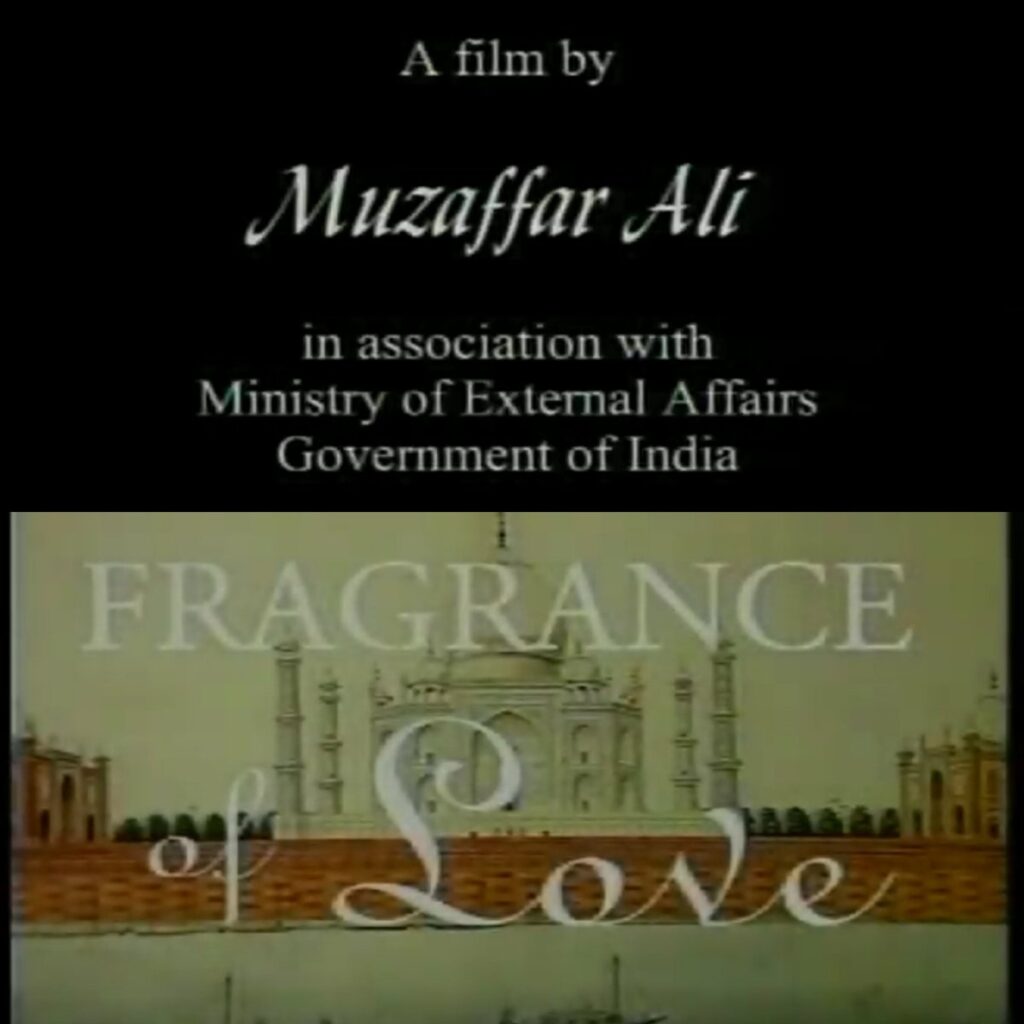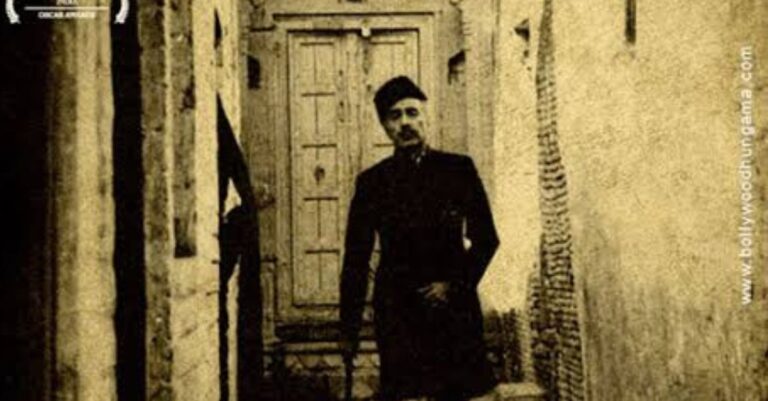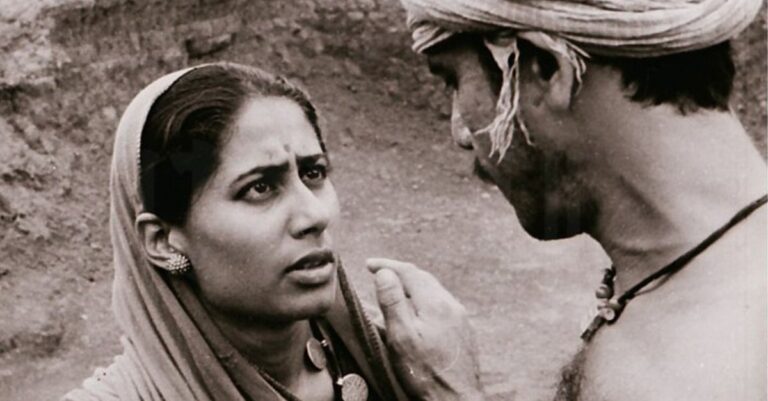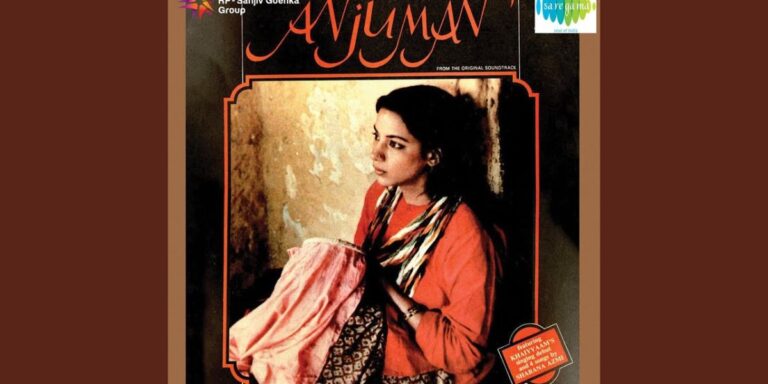Fragrance of Love (1998)
Directed by Muzaffar Ali
Produced by Muzaffar Ali & Ministry of External Affairs
Duration: 1 hr

Fragrance of Love is a film conceived and directed by Muzaffar Ali. Ali, as we all know, is a renowned filmmaker, painter, fashion designer, music composer, connoisseur of Urdu poetry, and Sufi aesthete. He is an embodiment of Awadhi tehzeeb and Sufiana mizaaj. Fragrance of Love, quite obviously, is a picturesque description of Muslims’ contribution to the making of India as a nation.
Dr. B.R. Ambedkar conceptualised a nation as a society with fraternity and minority rights. This film exactly embodies that vision. It showcases how Islamic culture has evolved over the centuries in South Asian soil and is now thriving as one of the most beautiful living cultures. The film is a collage of interviews with experts across disciplines who discuss Islamic culture, aesthetics, science and philosophy. It is a visual symphony of all these cerebral and emotional images combined.
For Muzaffar Ali, philosophy and beauty go together like mind and soul. This film is about the aesthetics of Islam in India, its inherent splendour and magnificence. It is a delight for the eyes and a refreshment for the soul. It is an exercise in mindfulness and a journey in soulfulness. Presented as the journey of Muraad Ali, it takes its viewers across places and cultures. The film illustrates a unique fragrance of Islam in the Indian subcontinent. It is the fragrance of love.
Watching this film, we were reminded of the scholarly work on lived Islam in the Indian subcontinent by historian Mushirul Hasan and sociologist Imtiaz Ahmad. They all argue that Islam in India has absorbed and contributed to the culture of South Asia at large. Pluralism is the hallmark of this Islam. Throughout its one-hour length, the film highlights this aspect through various means—art or architecture, trade or craft, music or song, poetry or philosophy. Muslim societies have evolved their traditions following modernity.
We are shown the magnificence of the Taj Mahal, Humayun’s Tomb, and Jama Masjid. These three monuments signify the enduring imprint that Muslims have left on the social fabric of north India. Journalist Saeed Naqvi tells us that living as a minority made Muslims much more adaptive to the exigencies of time and circumstances. They knew that pluralism must be practised in day-to-day life, making Islam in India inclusive.
Islam reached India via the sea routes of trading communities. Kerala still has one of the oldest mosques in India. The interview with Palwant Singh, architect and author, highlights the influence of Islam on Sikhism. When the mother of Guru Nanak was expecting him, her midwife was a Muslim named Daulata. Nanak’s childhood friend, Mardana, was also a Muslim. They were together for almost forty-seven years until the death of Mardana. Later, his son Shehzaad became his companion until Guru Nanak’s death. They travelled from Kabul to Mecca to Baghdad to learn about Islam from the perspective of its followers.
Nanak returned more enriched, fulfilled, and with greater insight. Later, Sikh gurus continued this practice of associating with Muslims. For example, the fifth Guru, Arjan Devji, invited his Sufi friend, Mian Mir, to lay the foundation stone of the Golden Temple.
Until the early 1930s, India was an example of communal harmony between Hindus and Muslims. Indeed, Gandhi ji fully supported the Khilafat movement, which was supported by the Ali brothers—Mohammad Ali and Shaukat Ali. Then, why did the Partition happen? The film suggests it was a British ploy to sustain colonialism in India. However, the film does not mention the recommendations of the Sapru Committee Report under Tej Bahadur Sapru against the Partition of India.
The film covers contributions made by Muslims in various fields. In architecture, we have examples like the Charminar of Hyderabad and the Taj Mahal of Agra. They leave tourists spellbound during the full moon and Ramzan.
In the case of music, we get to know an interesting story about Nadir Ali and his company, founded after a ship carrying musical instruments capsized in 1885. He bought those instruments, developed them, and eventually sold them in Meerut.
Ameena Ahuja tells us that the paintings of charinde-parinde are inspired by Islamic philosophy. Amir Naqi Khan of Mahmudabad talks about the food and culture of Awadhi dastarkhan. Any visit to mosques scattered across India gets you in touch with tranquillity and mindfulness. A mosque is a space where spirituality meets aesthetics. Every man is equal in front of Allah who is raheem, kareem, and razzaq.
Equality is one of the biggest strengths of Islam. This made Islam extremely popular among oppressed castes and communities. Periyar on Islam (2004) by G. Aloysius is a good essay. Islam spread mainly through the Sufi preaching. Due to their ideals of love for humanity, non-discrimination, and warm relations with the downtrodden, Sufis are becoming more and more popular. Delhi is considered as baaees khawaja ki chaukhat; an abode of tasawwuf. Sufism in India was a unique blend of ruhaniyat and insaniyat.
The spread of Islam among the oppressed communities made it more humane and inclusive. Most of these communities were, and still are, into craftsmanship and artisanal work. The film shows weavers of Meerut and Bhiwandi serving humanity through their dastkaari. Similarly, scrap dealers and repairers perform essential jobs for the Indian economy to sustain itself. It is the poorer sections, residing in small houses often located in slums, that are truly doing khidmat al khalq.
All these should not make us believe that Muslims in India are monolithic. The film shows considerable regional variation in the history and culture of Indian Muslims. Awadhi Muslims, Bengali Muslims, Marathi Muslims, Malayali Muslims, Telugu Muslims and Kannadiga Muslims are all distinct in their way.
The journey started by Malik Dinar in Kerala and continued with Quli Qutub Shah, Wajid Ali Shah, and Tipu Sultan. Qutub Shah founded Hyderabad, Wajid Ali gave Awadh its tehzeeb and Tipu Sultan became a symbol of anti-colonialism and martyrdom. After Wajid Ali Shah, the taluqdars of Awadh kept the flame of syncretism alive. Along with Delhi and Awadh, Rampur nawabs promoted Ganga-Jamuni tehzeeb.
The poetry of Kazi Nazrul Islam ignited the flame of love and patriotism in the heart of every Bengali. When Wajid Ali Shah was exiled to Kalkatta (Calcutta/ Kolkata), he brought his Lucknow to his new home in Metiaburuj. Similarly, when Tipu Sultan’s sons were handed over to Lord Cornwallis, the Tollygunge area was founded. Here, the Tipu Sultan mosque was built, which stands even today, attracting tourists and believers alike. Haji Mohsin Imambara at Hooghly is an excellent example of Indo-Dutch architecture.
Asghar Ali Engineer, in an interview, shares how Anjuman-e-Islam was founded by Badruddin Tyabji, Chief Justice of Bombay High Court. It was for both girls and boys and had technical education as well. Asghar Ali tells us how trading communities have contributed to India’s growing economy. Bombay Mercantile Co-operative Bank was founded by reforming Bohra Muslims. It works in favour of poor and vulnerable Muslims by excluding corrupt middlemen.
Not only Tyabji, but many other Muslim elites have significantly emphasised modern education. Ilm is important in Islam, as it assumes that culture and education (tehzeeb-o-taalim) go together. Alberuni wrote on every aspect of science in early medieval India. The taluqdars of Awadh contributed to the making of Lucknow University, Colvin College, and the Medical College. Nizam of Hyderabad founded Osmania University and Osmania Medical College.
Jamia Millia Islamia was founded in the 1920s as a part of the freedom struggle. It was inspired by Nai Talim, an educational concept theorised by Zakir Hussain and MK Gandhi. Jamia Hamdard, founded by Abdul Hamid in 1989, focuses on health and education. It aims to increase diversity in civil services through the Hamdard Study Circle. The film also showcases AMU and its contribution to the intellectual life of Muslims in South Asia.
India is a great nation with great religions and rich traditions. Here, amity among social groups is centuries old. People understand the importance of love, friendship and harmony. Here, arts and crafts are a shared heritage; joy and sorrow are shared emotions.
Fragrance of Love shows how Islam in India values social inclusion, cultural diversity, and religious pluralism. It is a testament to the cultural richness of Indian Muslims, a celebration of intricate artistry and communal harmony. It is an exquisite exploration of Muslim lives in India and their service to the nation and humanity.
(Qayam Masumi is the coauthor)




